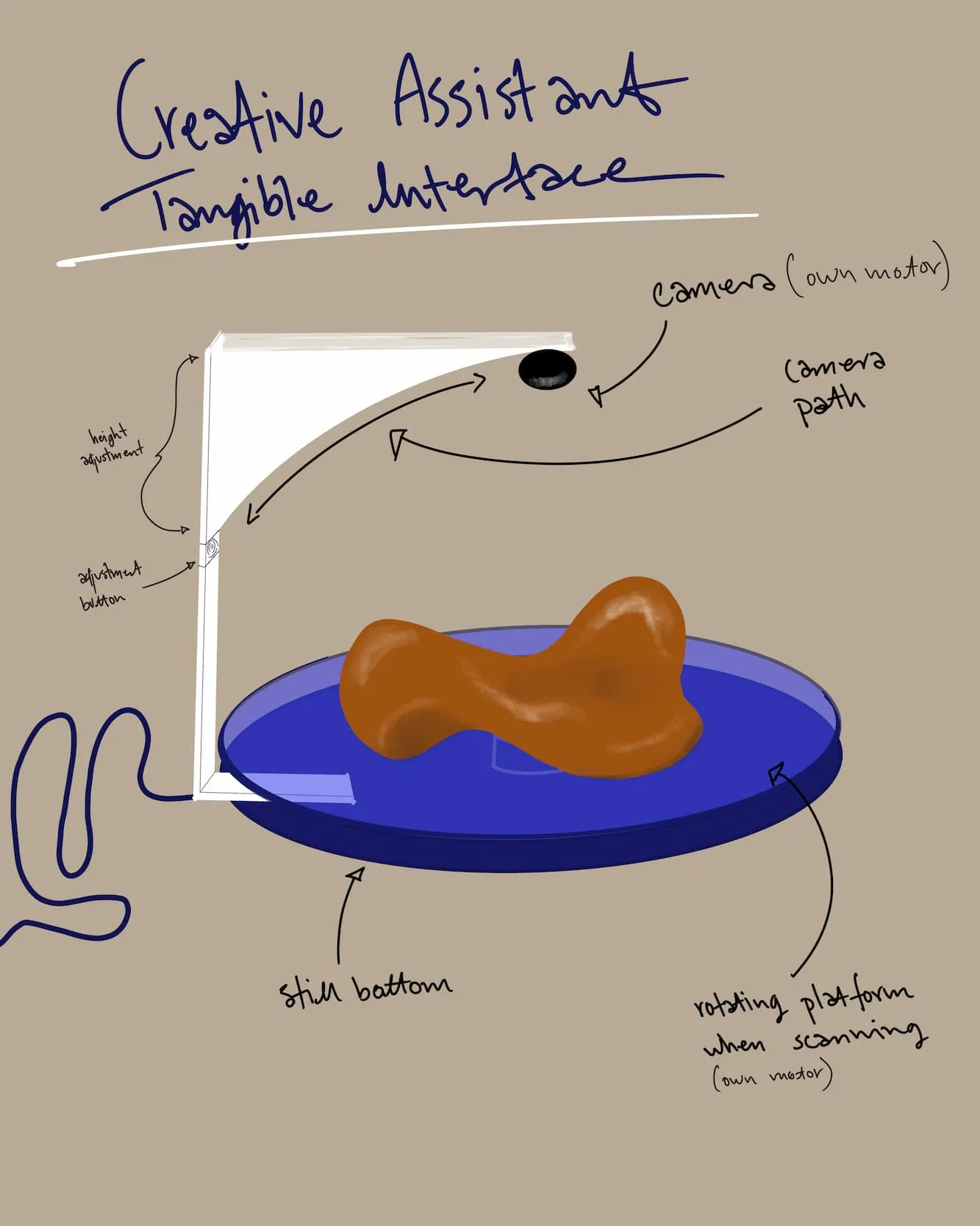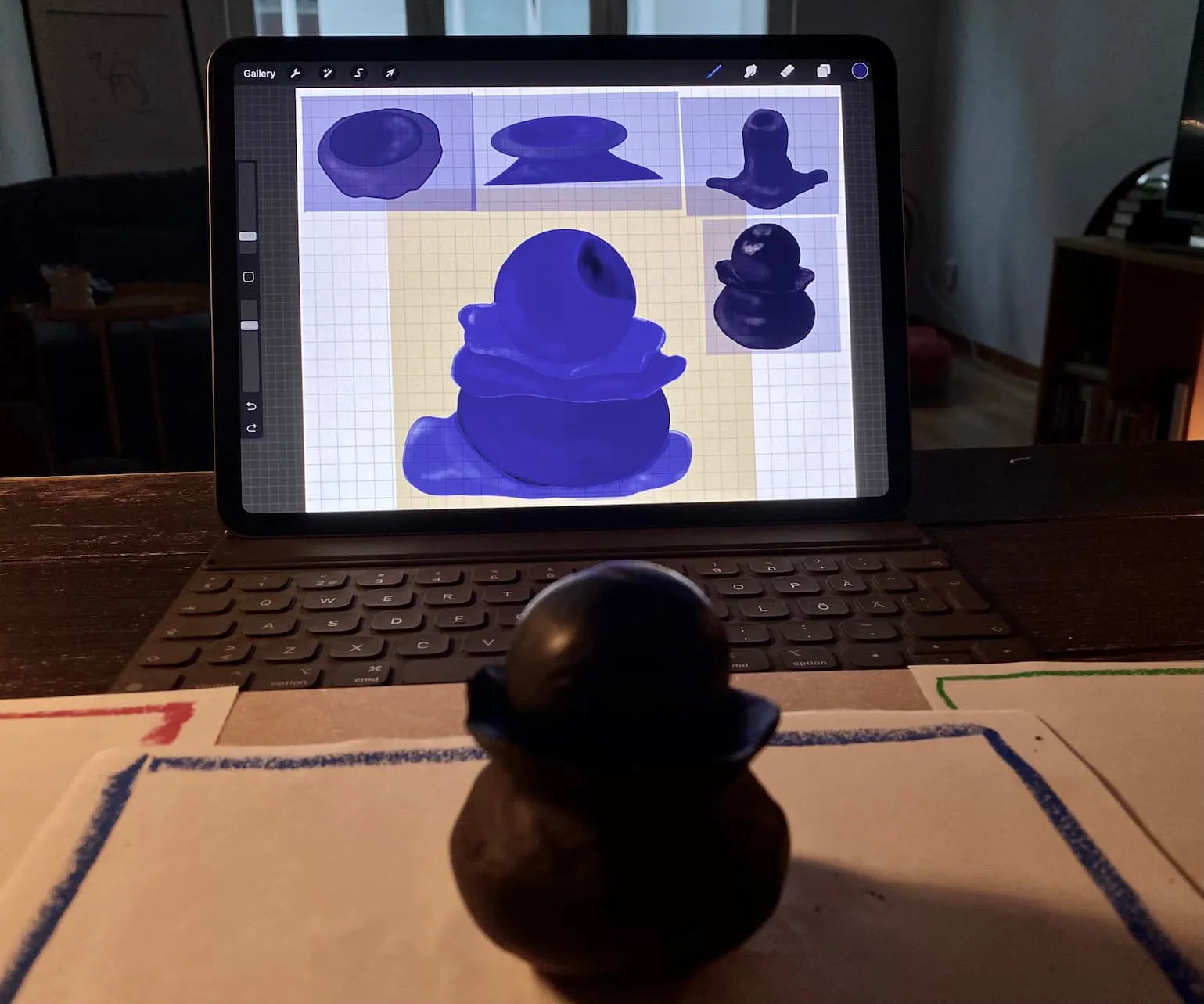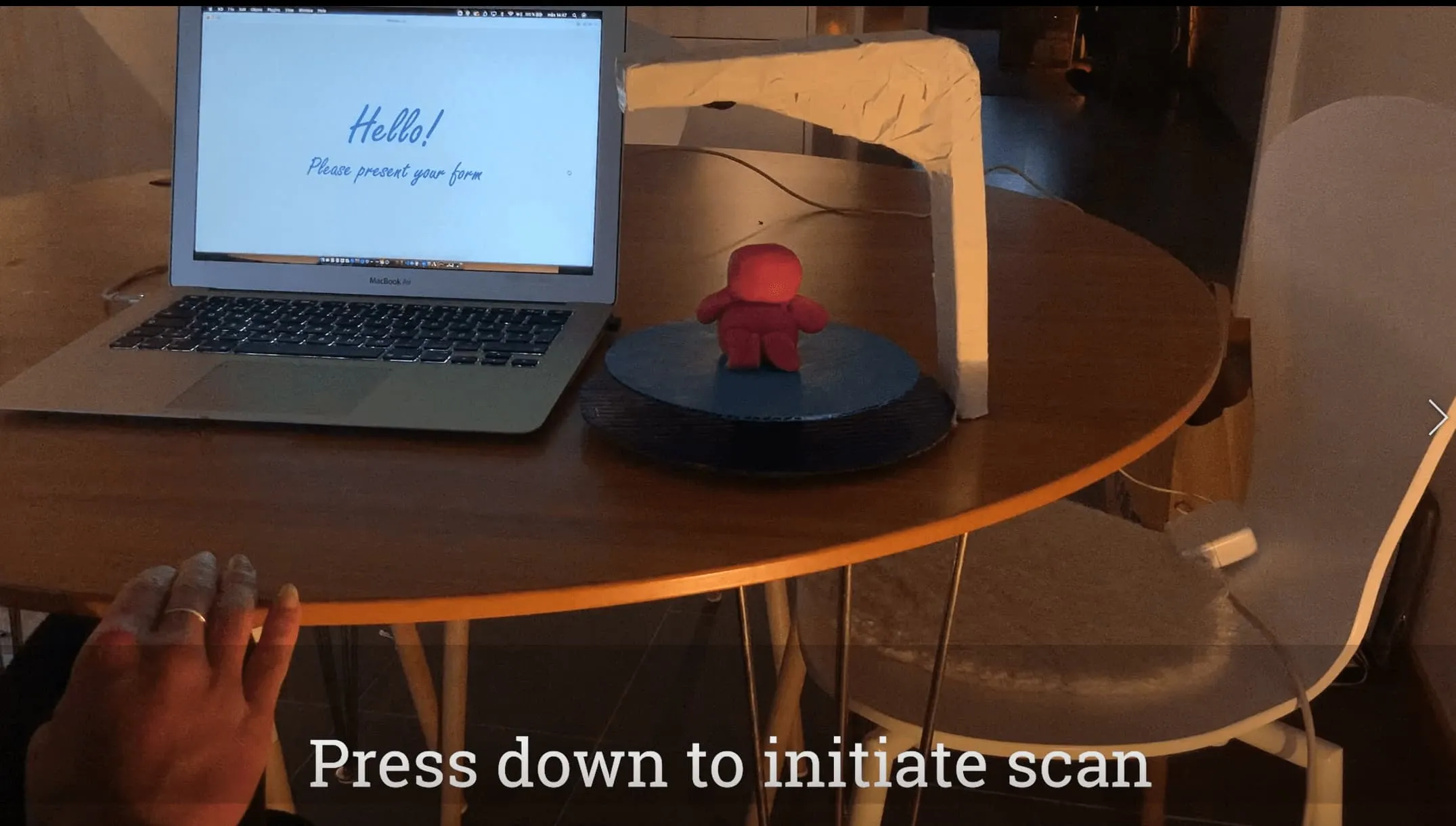The project originated from an investigation into what it means to design an AI system with a focus on transparency, proficiency, temporality and agency. We introduce AI Creative assistant as a co-creative AI whose purpose is to inspire artists who give form to clay. Moreover, we chose a creative setting and clay shaping context due to the tangibility aspect and design space for embodiment. The AI takes note of the user’s style and sense of artistic identity and generates 3D-forms from which the user can draw inspiration. Users of the device can improve the AI’s proficiency by providing feedback on the forms that it generates, signalling whether the given form was inspiring. Finally, the physical shape of the device and the analogue characteristics of its inputs blend seamlessly with the bodily involved process of shaping clay, creating a strong sense of unison between the technology and the activity.

“It gave me new ideas all the time,” said one of the artists who tested a later iteration of the prototype.
“It looks really nice, and it’s easy to follow.” another tester said in regard to the device’s visual feedback. “I know where I am in the process.”
“I like this one,” the user said while pointing at the prototype with analogue interactions. “It feels easier to use,” he said, comparing it to an alternative prototype with digital buttons.
Users can see how the AI-generated forms take shape by seeing them evolve from one iteration to the other, something that testers described as “more inspiring… I was able to follow its thoughts.” This additional layer of inspiration was sometimes so effective that it was deemed more inspirational than the forms that the AI generates. “It made me look at my form in a different way. What if I were to move this piece somewhere else instead?”

Curious users can get a glimpse at what the AI was drawing inspiration from while generating its form by seeing previously presented shapes that were particularly influential in its decision-making process. With such insight, users can understand how the AI arrived at its result and see how they themselves have affected the result through their previous efforts. If for whatever reason the user decides that they don’t want one or more of their previous forms to be part of the AI’s pool of inspiration, they can toggle them on and off at any time.
Overall, the project showcases how designers can infuse a sense of transparency, proficiency, temporality and agency, into their AI-related projects. The project also aims to show how AI can be used in creative environments and intends to illustrate the technology’s promising effect of inspiring users by inviting them to continue developing their proficiency in tandem with the AI’s.
